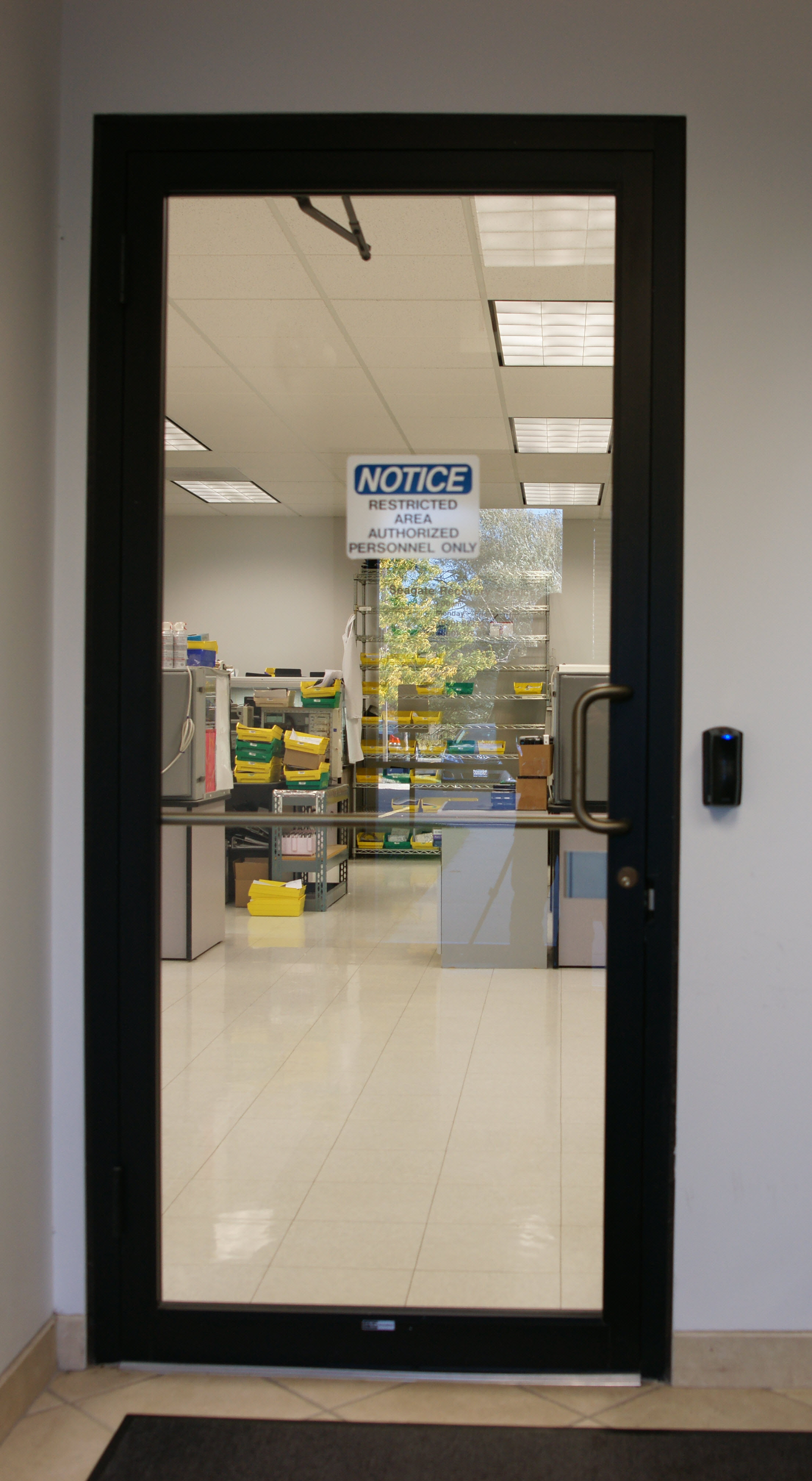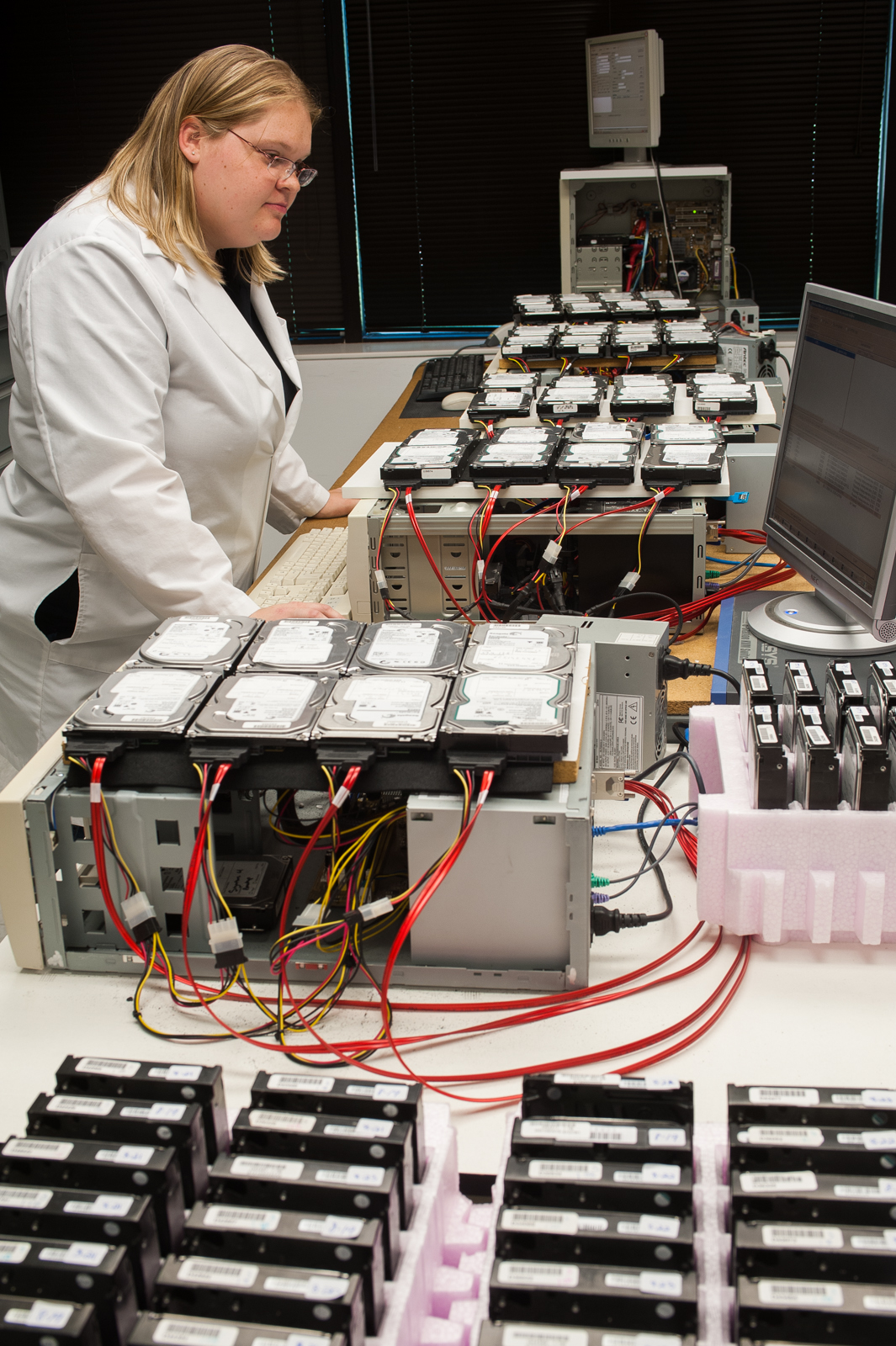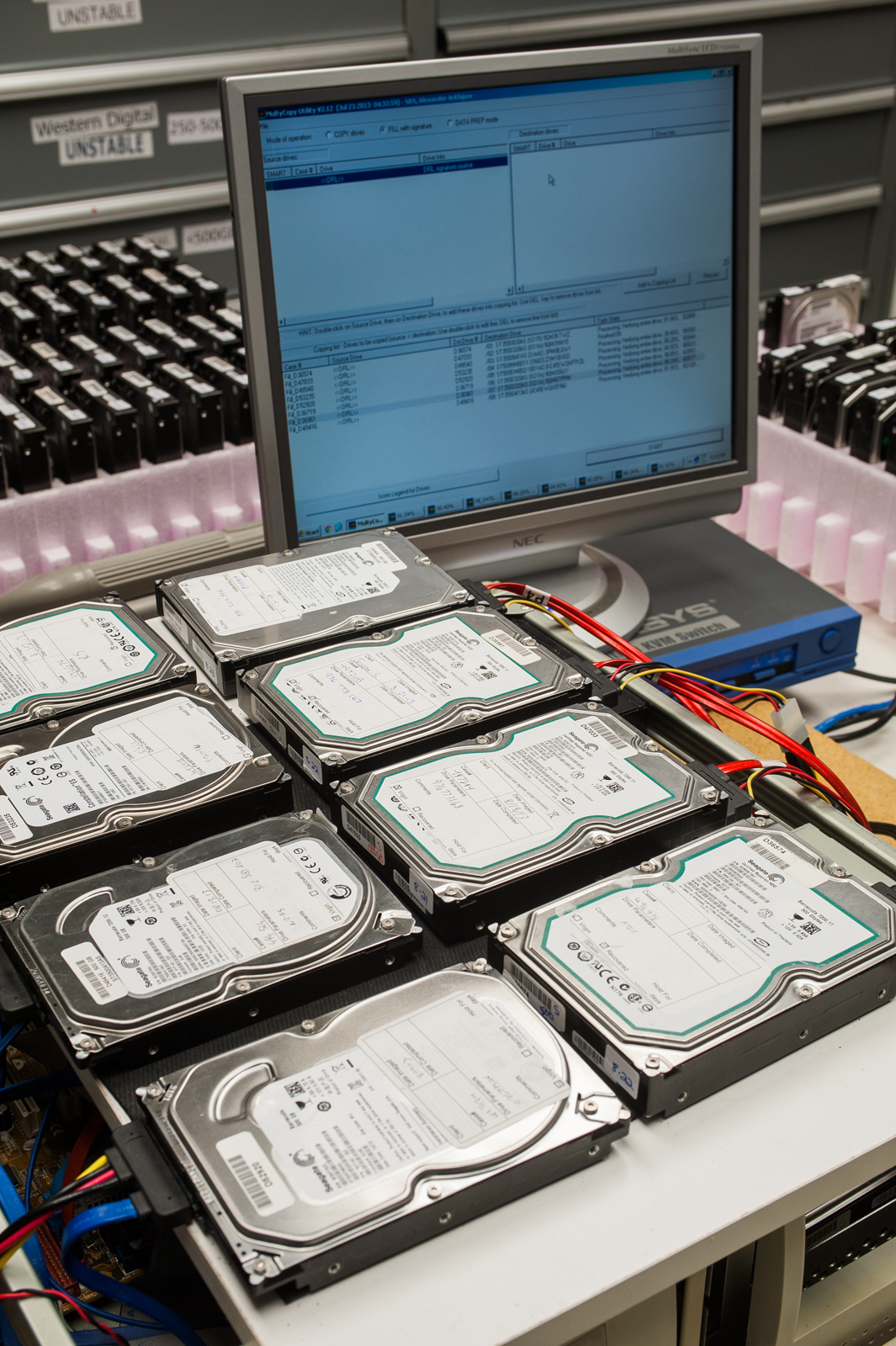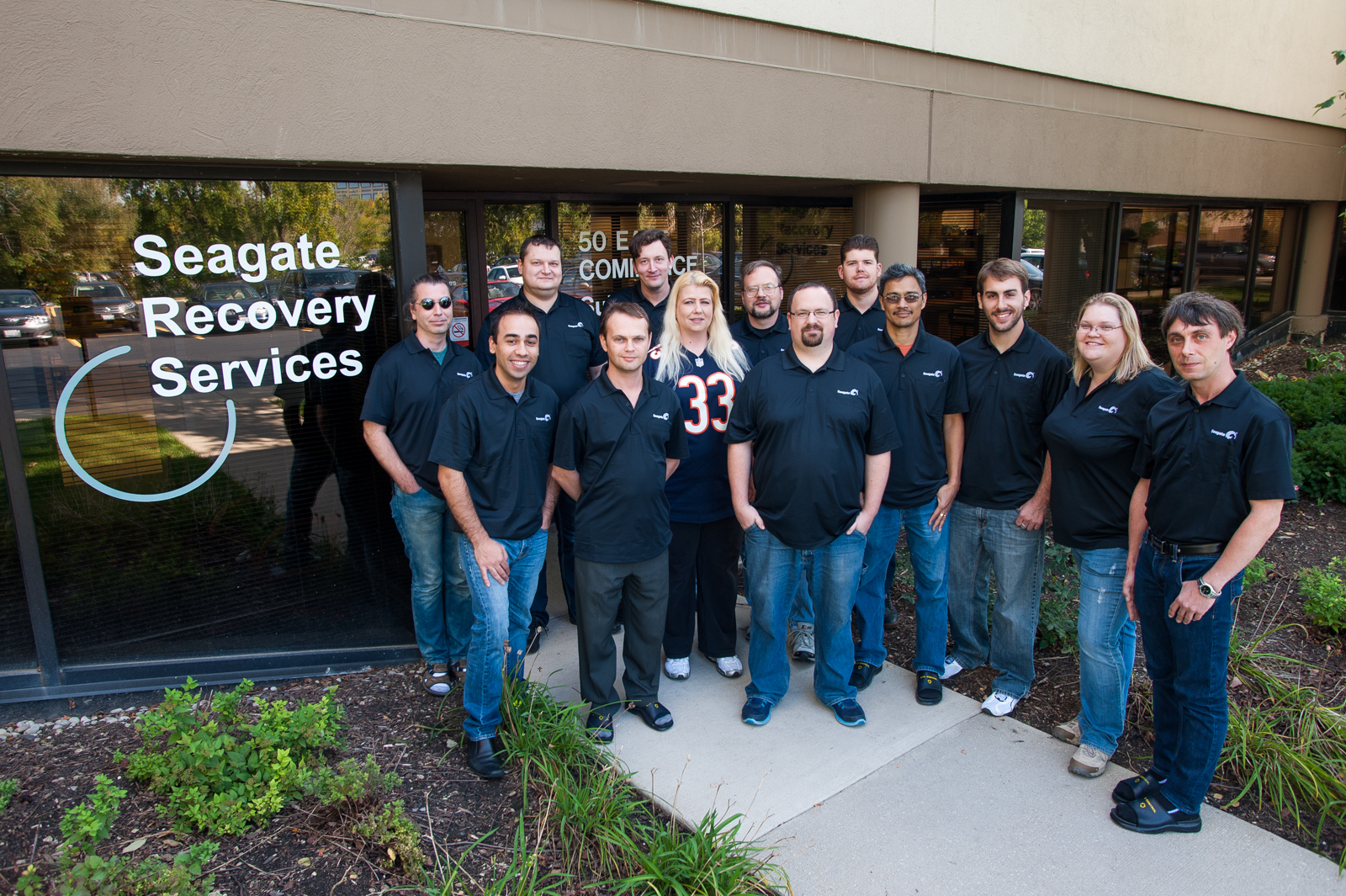Disaster Strikes: How Is Data Recovered From A Dead Hard Drive?
Paramount Privacy
Given that SRS assists in data recovery for some of the world’s biggest companies, it’s not surprising that security is a paramount concern throughout the organization. All lab entrances are locked with biometric fingerprint scanners, and access is limited to only essential personnel. Truth be told, I’ve been trying to land a photo story inside of SRS for several years (even in the days before Seagate’s acquisition), but the company has always been reluctant to allow media inside its operations, in part because of security concerns. Fortunately, the stars aligned (the Chicago facility was in the process of moving, plus the Seagate was comfortable with trusted photographer Peter Panayiotou) and we were able to move forward with this article.
The Paranoid Survive
Once recovery is complete, customer data gets returned on external media. I had about 3 TB of data on my NAS, and Seagate returned it all to me on a 4 TB external USB 3.0 drive. The verdict was that only six of my MP3 files could not be recovered. Compared to losing all of my family photos and videos? Yeah, I can live with replacing six songs.
And what of my old drives? As a matter of policy, SRS holds on to the original drives for about a month. This gives the user time to get the rescued data plugged in, backed up, confirmed, and so on. Because accidents can happen. Shipments get lost or dropped. Another disaster could strike before everything gets finalized and copied. So as part of its service, Seagate keeps the original media as well as its rescued “good media” image for a few weeks…just to be safe.
Wipe And Shred
The only time customer data ever leaves SRS is on that lone shipment back to the owner. As a matter of course, Seagate does reuse its in-house drives for additional customer jobs (until they show any signs of wearing out), but every one of these drives finishes its rotation with a spin though a thorough wiping routine, as pictured here. “Wiping” refers to a physical overwriting of every sector on the media, unlike “deleting,” which leaves most bits untouched. There are military-class specifications for drive wiping, and many organizations will run three or seven wiping passes to be ultra-safe. Seagate wouldn’t disclose its exact procedure in this case, but with so much riding on its reputation with corporate clients, we’re confident that the wiping process is thorough and effective.
Seagate’s wiped drives go back into internal circulation. Customer-wiped drives take one more step down the process line…into an industrial shredding machine.
Numbers
Twenty-eight man-hours for a NAS recovery does not come cheap. During my initial call to SRS, I was quoted a range from $3000 to $20,000 for the four-drive recovery, depending on the nature and severity of the damage. Yes, I went through that initial jaw-dropping moment of financial terror. But would you max out a credit card to save your family history? Well, you may not have to. As mentioned earlier, the majority of recoveries can be done simply with software, and Seagate now sells its File Recovery Software for $99. You can try before you buy. If you don’t feel comfortable taking the DIY route, you can let an SRS tech remote into your system, then install and run the software on your behalf for $199. In-lab recovery starts at $399, which includes inbound and return shipping as well as the initial pre-analysis. There are cheaper recovery services, and you’ll probably find local recovery companies in your area. In general, these will be working on logical recoveries. Many such local firms contract out to SRS for tougher jobs involving physical damage.
A Better Bet
While I'm immensely glad and grateful to have my 3 TB of data back, I'd prefer not to go through this again. To that end, I’m now reviewing a new NAS, as well as backing up everything to CrashPlan. So I will have all of my data replicated from my internal drives to the NAS through a backup app (SyncToy for now) as well as replicating out to the cloud. A cloud backup of 3 TB will literally take months. Even now, about five weeks into the process, I haven't even cleared the first terabyte yet. But with the NAS in place and my most critical files in the first 700 GB, I feel content and covered.
Get Tom's Hardware's best news and in-depth reviews, straight to your inbox.
For those who don't want the hassle of these steps, you might want to investigate subscribing to a service like Seagate's Rescue and Replace. In a nutshell, you can insure (my word, not Seagate's) a drive for two ($40), three ($50), or four ($60) years. In the case of just about any drive problem, you can send your drive through SRS's recovery process and get a replacement drive in return. If you're content to download the data from Seagate and don't need a new drive, deduct $10 from those numbers. The service is tied to the drive's serial number and so is not transferable. Seagate obviously knows what the annual failure rates are on drives and will no doubt profit well from the service. But $50 for three years and you never have to worry about the drive failing and losing its contents? Under normal circumstances, that might seem steep. But every time I think about that initial price quote for recovery, well...$50 sounds pretty cheap.
This isn't a commercial. Seagate helped to bail me out of a horrific situation and did a stellar job at it. But I heartily encourage you to shop around with various storage services and solutions, and I hope you never need to send a drive off for recovery. If you do, now you'll know what will happen to your precious drive once it leaves your hands and perhaps sleep a little easier through the nightmare.
-
jamie_1318 Wow, really neat article. I had understood most of the general practices but it was interesting to see the facilities at work.Reply -
mayankleoboy1 great article. considering i lost my decade worth of data 3 days back due to a WD HDD failure :(Reply -
Da_Man one of my 2tb drive suddenly detected as RAW in my windows 8.1 machine, Luckily i manage to fix it using TestDisk (free) to repair my ntfs partition, and all its fine. only couple file is broken.Reply
so always backup your drive :) -
Vorador2 Good article. Most people only take backup seriously when it's too late.Reply
Makes me glad i do weekly backups at home. -
lilcinw Wow... your NAS didn't inform you that a drive had failed? I hope that beast is in the trash.Reply -
Quarkzquarkz You people should always back up your data, and NEVER cloud data. Yes yes I know backing up data is tedious and takes precious time but you would never have to spend 3000-20k us dollars for recovery.Reply
And besides, in RAID 5 you still lose data? You must have been beyond lazy to not figure out your 1st drive failed before the whole RAID collapsed. Shame on you, and let this be a lesson to the rest of you lazy IT's, TRUST me~ =(




